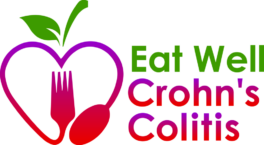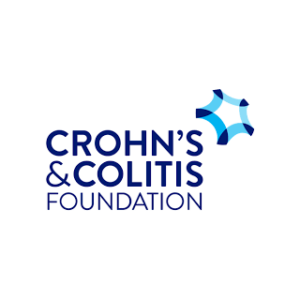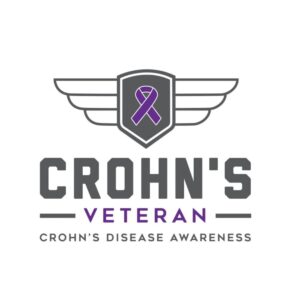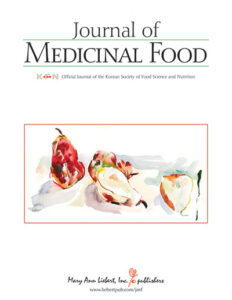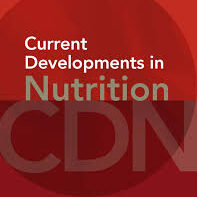Sugar and IBD: The Not So Sweet Truth
Danielle Gaffen, MS, RDN, LD
- Last Updated
Researchers have come to a general consensus that the typical “Western Diet” has played a leading role in the rapidly increasing incidence of both Crohn’s disease and ulcerative colitis (UC) in industrialized geographic regions of the world over the past 50 years.
But what exactly about the Western diet may be to blame? While a heavy emphasis on inflammatory fats and meats have traditionally been considered the prime suspects, a growing number of research studies now suggest simple sugars as leading culprits.
Most US adults exceed recommended limits for added sugars. Added sugars are sugars and syrups that are added to foods or beverages. Naturally occurring sugars are those in fruit and milk, which are not added sugars [1]. On average, American adults consume 77 grams of added sugar per day, which is about 60 pounds of added sugar consumed per year [2].
Notably, sugar-sweetened beverages, such as soda, sports drinks, energy drinks, fruit drinks and sweetened coffees and teas contribute to over 40% of daily intake of added sugars [3].
Considering that the U.S. accounts for one-third to one-half of IBD cases worldwide, it’s easy to see how the IBD-sugar connection became a subject of inquiry.
What the research says about sugar and IBD
In a study published in February 2016 in Inflammatory Bowel Diseases, researchers found a positive association between a “high sugar and soft drinks” eating pattern and risk of ulcerative colitis [4]. The study was the largest of its kind, involving 366,351 participants, and also determined that high consumers of sugar and soft drinks were at higher UC risk if they had low vegetable intakes.
A study published in October 2020 in Science Translational Medicine found that added sugar in the diet can lead to IBD [5]. In this study, researchers looked at three groups of mice — those with a healthy gut, a group genetically predisposed to develop colitis, and a group fed a compound to cause colitis. The mice were then further divided into groups based on sugar intake. One subgroup received a 10% simple sugar solution for one week in concentrations similar to a soft drink. Other subgroups of mice had no added sugars in their diet. At the end of the 7-day period, the mice on the added-sugar diets developed colitis that was far more severe than the no sugar added group. The gut microbiomes of all the mice fed sugar were significantly changed, with a notable increase in pathogenic or “bad” bacteria that degrade the layer of protective mucus that lines the gut, while quantities of beneficial or “good” bacteria, like Lactobacillus, decreased, effectively setting the stage for colitis.
While sugar consumption has been linked to the development of IBD, a study published in the Journal of Academy of Nutrition and Dietetics in January 2022 found that high consumption of sugar-sweetened beverages over a three-year time period was strongly associated with poorer clinical outcomes in a large group of patients with IBD (1,133 participants) for multiple years [6]. Specifically, IBD patients who drank more than 7 sugary drinks per week had higher rates of hospitalization, emergency room visits, laboratory abnormalities, and inflammation. Moreover, an independent validation group of patients with IBD, who were followed for a shorter, two-year time period, yielded similar results.
In addition to the potential role of added sugars as a causative factor for IBD, it’s recommended it’s recommended during an IBD flare to decrease concentrated sweets in your diet. Foods such as juices, candy, and soda can pull water into your intestine, which may contribute to watery stools and diarrhea.
What does this practically mean?
The American Heart Association recommends limiting added sugars to no more than 6% of total calories consumed per day [7]. For most American women, that’s no more than 24 grams or 6 teaspoons of sugar, or about 100 calories from sugar per day. For men, it’s 36 grams or 9 teaspoons of sugar, or about 150 calories from sugar per day.
Considering that a single 12-ounce can of soda contains 39 grams or nearly 10 teaspoons of added sugar, it’s easy to see just how quickly it’s possible to exceed the limit.
To figure out if a packaged food contains added sugars and how much it contains per serving, check the Nutrition Facts panel. There you will see “added sugars” underneath the line for “total sugars.” There are four calories in one gram of sugar, so if a product has 10 grams of sugar per serving, that’s 40 calories just from the sugar alone, not including the other ingredients.
If a nutrition facts panel is not listed on a product, I recommend looking at the list of ingredients, as there are at least 61 different names for sugar listed on food labels. Besides those ending in “ose” (such as maltose, sucrose, or dextrose), other common names for sugar include high fructose corn syrup, molasses, cane sugar, corn sweetener, raw sugar, syrup, maple, agave, brown sugar, honey, and fruit juice concentrates.
Take Home Message
Because sugar has been linked to the higher incidence of IBD, greater hospitalizations and worse symptoms with IBD, and can cause diarrhea in concentrated amounts, there is a case to be made for seeking out some simple swaps to reduce the amount of sugar in your eating plan in favor of alternatives naturally lower in sugar.
Want to know more about what science is discovering about nutrition for IBD, with reliable sources?
If you’re tired of endless nights of reading contradictory nutrition information for IBD online and have been feeling confused about what to eat, know that you’re not alone — That’s why I’ve created a program specifically for people with IBD!
References:
1. CDC. Know Your Limits for Added Sugars. Centers for Disease Control and Prevention. Published January 13, 2022. Accessed March 29, 2022. https://www.cdc.gov/healthyweight/healthy_eating/sugar.html
2. Added Sugars. www.heart.org. Accessed March 29, 2022. https://www.heart.org/en/healthy-living/healthy-eating/eat-smart/sugar/added-sugars
3. Dietary Guidelines for Americans, 2020-2025.
4. Dietary Patterns and Risk of Inflammatory Bowel Disease in Europe: Results from the EPIC Study | Inflammatory Bowel Diseases | Oxford Academic. Accessed March 29, 2022. https://academic.oup.com/ibdjournal/article/22/2/345/4561775
5. Khan S, Waliullah S, Godfrey V, et al. Dietary simple sugars alter microbial ecology in the gut and promote colitis in mice. Sci Transl Med. 2020;12(567):eaay6218. doi:10.1126/scitranslmed.aay6218
6. Ahsan M, Koutroumpakis F, Rivers CR, et al. High Sugar-Sweetened Beverage Consumption Is Associated with Increased Health Care Utilization in Patients with Inflammatory Bowel Disease: A Multiyear, Prospective Analysis. J Acad Nutr Diet. 2022;0(0). doi:10.1016/j.jand.2022.01.001
7. How much sugar is too much? www.heart.org. Accessed March 29, 2022. https://www.heart.org/en/healthy-living/healthy-eating/eat-smart/sugar/how-much-sugar-is-too-much
